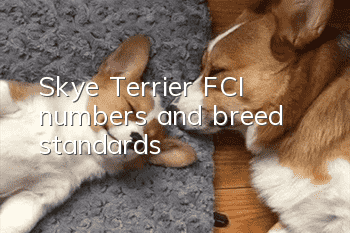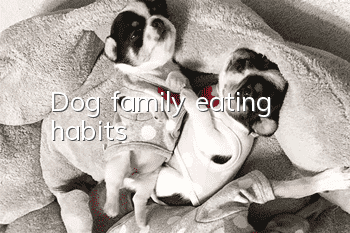Skye Terrier FCI numbers and breed standards

The Skye Terrier was bred on the isolated Scottish island of Skye. The residents of the island specialized in hunting otters, badgers and foxes. Its keen sense of smell and agile, strong, muscular body are capable of finding them, digging their burrows, and capturing them. The Isle of Skye Terrier's short, muscular legs are ideal for digging, and its double coat protects it from rivals and harsh weather. Initially, lop-eared breeds were more popular, but later in the 19th century, prick-eared breeds became popular as pets and show dogs, in part due to Queen Victoria's fondness for this breed type.
【Overall appearance】
The Skye Terrier is a dog with elegant style and noble temperament. It is lively, strong, with strong bones and strong muscles. The body is long, the height is short and level, the body length is twice the height. The coat is richly covered, hanging straight down to the oval ribs on both sides of the trunk. The head is richly feathered, covering the forehead and eyes. It can not only avoid damage to the eyes by bushes and thorns, but also prevent damage to itself from major enemies. . When standing, the head is held high and the tail is hanging, and when moving, it seems effortless. The trunk is strong and the jaw is strong.
【Skye Terrier’s FCI number: 75】
The FCI group of the Skye Terrier: Group 3: Terrier group
Height of Skye Terrier: Male Skye Terrier is 9.1-9.8 inches (23.0-25.0 cm) at the withers, and female Skye Terrier is 9.1-9.8 inches (23.0-25.0 cm) at the shoulders.
The weight range of the Skye Terrier: the male Skye Terrier weighs 18.7-23.2 pounds (8.5-10.5 kg) and the female Skye Terrier weighs 18.7-23.2 pounds (8.5-10.5 kg)
Head: Long, strong and powerful, strength considered more important than length.
Eyes: Brown, ideally dark brown, medium size, close to each other, full of life, intelligent.
Ears: symmetrical, beautifully feathered, with two types: lop ears and erect ears. Erect ears, medium size, set high on the skull, upright on the outer edge of the skull, the distance between the ear tips is slightly wider than the distance on the skull; drop ears, larger, low-set, flat. The skull is moderately broad dorsally, tapering forward to meet the muzzle.
Nose: The bridge of the nose is slender. Dark kisses are moderately rich. The chin is strong and powerful. Flesh or tan color and nose do not meet standards.
Mouth: The teeth are scissor-shaped or have a horizontal bite, or a slight overbite.
【Proportion and Structure】
Size - The ideal height for a male dog is 25.4 cm, and for a female dog, the ideal height is 25.4 cm.Dogs are 24.1 cm. Based on these heights, a male dog 25.4 cm tall would have a length of 50.8 cm from sternum to top of tail at rump. A little taller or a little lower is acceptable for both female and male dogs. Male dogs 22.9 cm or shorter and female dogs 21.6 cm or shorter will be punished. Proportions - The ideal ratio of torso to height is 2:1, which is considered most suitable. Physique - Strong, full of strength, of good quality but not rough, with strong and thick bones.
【Topline and trunk】
Neck—Long, gracefully arched, carried high and with pride. Topline level. Trunk - Long and low, with deep chest and oval ribs. Due to the abundant coat, it hangs straight down and looks a bit flat on the sides.
【Tail】
Long and well-feathered, when the tail is hanging, the upper part of the tail droops along the line of the rump, and the lower part of the tail is curved back in a moderate arch, but not coiled or curled. When the tail is carried level with the topline. Although a raised tail is not standard when the dog is excited or angry, such a gesture is permitted if it is caused solely by emotion. However, the height of the tail should not constantly exceed the level of the back or hang loosely.
【Forequarters】
The shoulders are tilted back and the scapula structure at the shoulder hump is compact. The elbows are close to the sides of the torso, with moderate tightness. The upper arms are slightly bent at the chest. The front legs are short, muscular and as straight as possible. [Feet] Large, rabbit-shaped feet, ideally pointed forward. The pads of the feet are thick, the toes are strong, and the ideal color is black. [Hindquarters] Strong, plump, well developed, and well angulated. The legs are short, muscular, straight when viewed from behind, and the feet are the same as the front feet. 【Coat】Double coat, the undercoat is short, soft and wool-like. The outer coat is hard, straight and flat, 14.0 cm long. The coat on both sides of the trunk hangs down vertically, forming a slit from head to tail. The head coat may be slightly shorter, covering the forehead and eyes, forming a modest "beard and skirt." The long feathers on the ears hang straight down from the tips and outer edges of the ears, surrounding the ears like tassels and outlining the general shape of the ears. The ends of the hair are mixed with the coat on the neck, and the tail is richly feathered.
【Color】
The coat must be one complete color, but may have shades of the same color, which may be black, dark or light gray, or silver, fawn or cream. The dog must have no obvious markings, except for the black on the ears, muzzle, and tail tip, all of which are ideally dark or even black. headThe color tone on the legs should be similar to that on the torso. There should be no markings, patterns or clear color changes other than the white color permitted by the breed, which may appear only occasionally on the chest and should not exceed 5.1 cm in diameter. Puppies can have a different coat color than adult dogs. Because a variety of colors can appear as it grows and matures, this is permitted in dogs younger than 18 months of age. However, even in puppies, there should be no markings or markings other than a black stripe around the cream-colored trunk coat and only white (permitted only on the chest, not exceeding 5.1 cm in diameter) as in the adult dog. color changes.
【Gait】
When walking, extend your legs straight forward. When advancing, the front legs form a continuous straight line. The distance between the feet is as long as the distance between the hocks. When walking straight forward, the hind legs are the main propulsive force, and the front legs move forward well, but not too high. The whole movement can be described as follows: lively, effortless, presenting a smooth picture.
【Character】
The typical working terrier is brave, good at digging, patient, strong and agile. Brave and fearless, good-tempered and loyal. It is friendly and enthusiastic with acquaintances, but reserved and wary of strangers.
【Disqualification Conditions】
Flesh-colored or brown noses are not acceptable.
- What causes Chinese Garden Dogs to have more eye mucus?
- How to improve your dog’s tartar problem
- How to train a Pitbull? How many months old is it best to train a Pitbull?
- What common diseases do dogs have in autumn?
- Dog’s performance and body temperature changes before giving birth
- What should I do if my Boston Terrier eats too much and has diarrhea?
- Are Corgis aggressive?
- What should I do if my Teddy dog eats too much and has diarrhea?
- How should pets be dewormed, and how often should pets be dewormed?
- At what age can a Bichon Frize dog express its anal glands?



